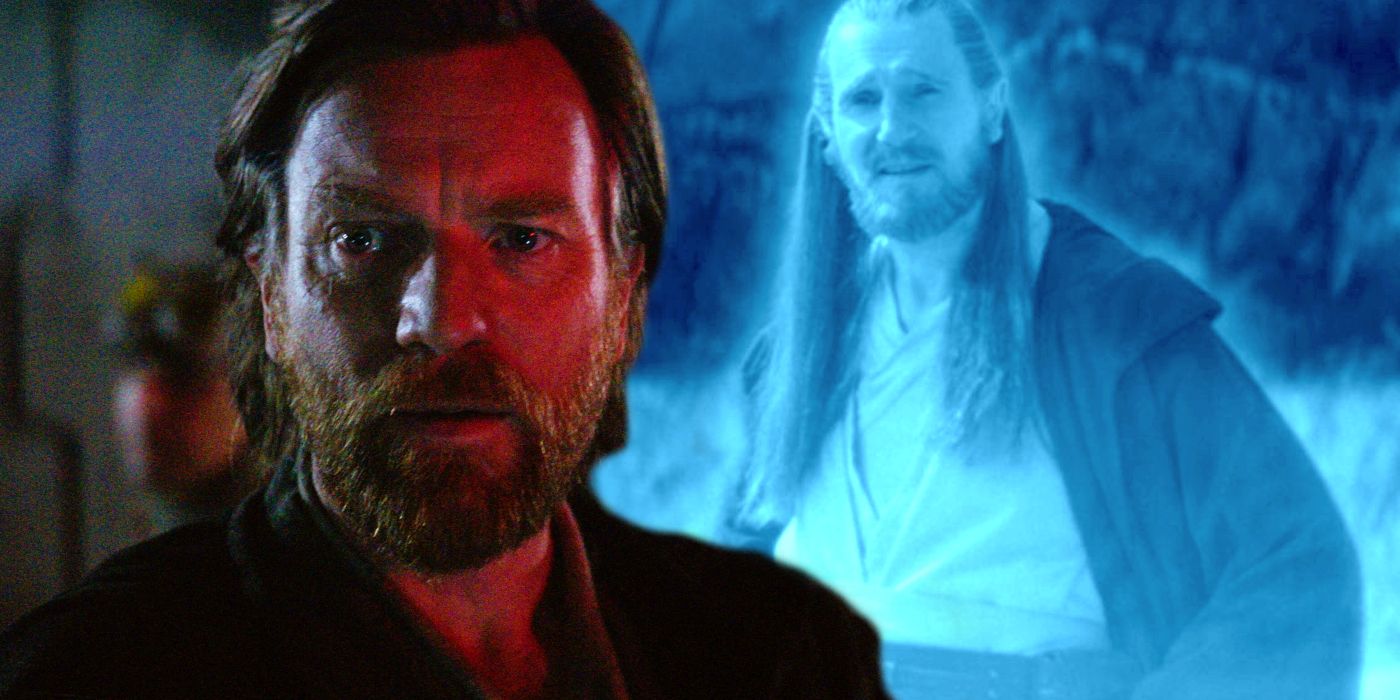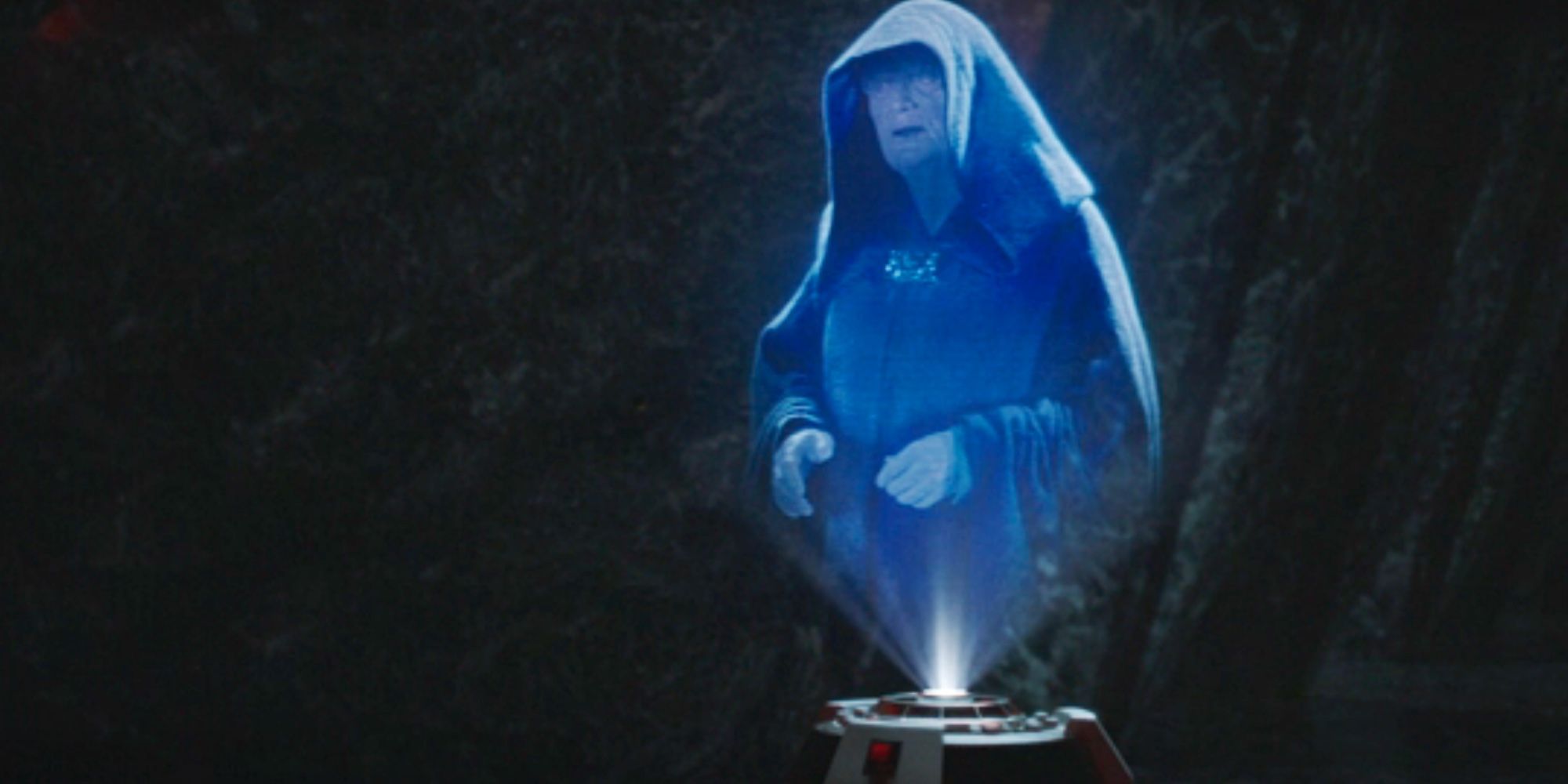Warning: Contains SPOILERS for Obi-Wan Kenobi
After several questionable character appearances across multiple Star Wars projects, Obi-Wan Kenobi has finally shown the franchise how to use cameos successfully. With such a wealth of additional material and a lengthy character list, it's no surprise that familiar faces continually crop up throughout the series. However, Star Wars has come under heavy criticism for overly relying on nostalgia, instead of organically incorporating legacy characters to create a compelling story. As Obi-Wan Kenobi has proven, showcasing popular characters isn't necessarily a bad thing, provided it's done in the right way.
Although the focus of the Obi-Wan Kenobi finale was the climactic duel between the titular Jedi knight and Darth Vader, "Chapter VI" was filled with enough Easter eggs and shock appearances to excite any Star Wars fan. This battle gave audiences their first glimpse of Hayden Christensen under the iconic helmet since Revenge of the Sith's ending 17 years earlier. But, while the emotional Obi-Wan/Vader battle was a major talking point, it wasn't the only headline. Cameos from the likes of Ian McDiarmid as Emperor Palpatine and Liam Neeson as Qui-Gon Jinn – in his first Star Wars appearance since The Phantom Menace – ensured that the episode carried plenty of emotional resonance for viewers as well as spectacle.
While the return of McDiarmid and Neeson alone would have been enough to cause a ripple of excitement among the fanbase, what really helped the Obi-Wan Kenobi finale to stand out was the way in which it utilized these cameo appearances. In both cases, the return of iconic characters was not simply about satisfying audience demand, but rather about advancing the overall narrative. The returns helped to answer some major questions and better connect the events of Obi-Wan Kenobi to the original Star Wars trilogy. By continuing to employ this approach, Star Wars can ensure that any future cameos aren't justifiably accused of paying lip service to fans, without offering anything more substantial underneath the surface.
Kenobi Finally Solved Disney's Star Wars Cameo Problem
Though the return of Ian McDiarmid's iconic Darth Sidious was extremely exciting, it was the circumstances around his appearance that made it so successful. In his brief exchange with Darth Vader, The Emperor helped explain why Vader ignored Obi-Wan after their epic rematch. In his conversation with Vader, The Emperor projects a mask of concern for his "friend" and apprentice, disguising his real fear that Anakin's attachments and emotions will actually lure him back to the light. Asking him to prove his loyalty and disinterest in his old master, the Emperor deliberately tricks Anakin into falling further into darkness, away from an emotional connection that could be his salvation. This also helps explain why Vader didn't seek revenge in the run-up to Episode IV, as he was proving his loyalty to Palpatine. As a result, McDiarmid's cameo adds an extra layer to Vader's character, while filling in the narrative gap between Obi-Wan Kenobi and A New Hope, making it important as well as enjoyable.
Similarly, Liam Neeson's Qui-Gon Jinn appearance provides a crucial piece of the puzzle behind Obi-Wan's later appearances in the original trilogy. Thanks to Obi-Wan Kenobi, Qui-Gon is now chronologically the first Force ghost to appear on screen in a major Star Wars property. This fits with Yoda's words at the end of Episode III about the training that he had for Obi-Wan during his exile on Tatooine, and shows exactly how he was able to learn the secret. Like all successful cameos, seeing Liam Neeson inhabit one of his most popular roles once more was thrilling. Yet the connection to Force ghosts and how Alec Guinness' Obi-Wan was able to return after his eventual death at the hands of Darth Vader makes the moment integral to the overall Star Wars story as well as exciting in and of itself.
One of the biggest criticisms leveled at the sequel series and subsequent Star Wars TV spin-offs has been the inclusion of cameos for cameo's sakes. Characters like Cad Bane, who are incredibly popular with the fanbase, have made fleeting appearances seemingly for the sake of ticking a box rather than contributing anything significant to the story. In Obi-Wan Kenobi, however, Star Wars combines audience appeal with narrative importance. It's an approach that the franchise would do well to continue.
All episodes of Obi-Wan Kenobi are now available on Disney+
Want more Obi-Wan Kenobi articles? Check out our essential content below...
- Obi-Wan Kenobi Cast Guide: Every New & Returning Star Wars Character
- Who Voices Darth Vader In Obi-Wan Kenobi
- Obi-Wan Kenobi Season 1 Ending Explained (In Detail)
- Everything We Know About Obi-Wan Kenobi Season 2
- Obi-Wan Kenobi vs Darth Vader Winner Explained
- Obi-Wan Kenobi's Force Ghost Cameo Explained
- Why Obi-Wan Kenobi Is So Weak In His Star Wars Show
- Who Were The Jedi In The Tombs In Obi-Wan Kenobi Episode 4
- Obi-Wan Kenobi Episode 6 Easter Eggs & Star Wars References Explained
- Darth Vader Pulling The Ship Pays Off A 14-Year-Old Star Wars Dream
- What Happened To The Grand Inquisitor?
- Obi-Wan Episode 5 Ending: What The Final Shot Of Luke Skywalker Means
- Every Jedi Alive During Obi-Wan Kenobi's Timeline


